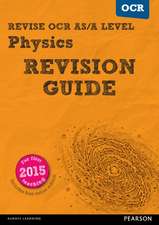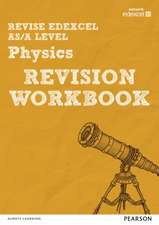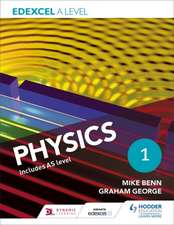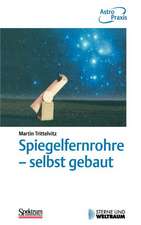Kristian Birkeland: The First Space Scientist: Astrophysics and Space Science Library, cartea 325
Autor Alv Egeland, William J. Burkeen Limba Engleză Hardback – iun 2005
Faced with depleting stocks of Chilean saltpeter and the consequent prospect of mass starvation, Birkeland showed his practical side, inventing the first industrial scale method to extract nitrogen-based fertilizers from the air. Norsk Hydro, one of modern Norway’s largest industries, stands as a living tribute to his genius.
Hoping to demonstrate what we now call the solar wind, Birkeland moved to Egypt in 1913. Isolated from his friends by the Great War, he yearned to celebrate his 50th birthday in Norway. The only safe passage home, via the Far East, brought him to Tokyo, where he passed away in the late spring of 1917.
| Toate formatele și edițiile | Preț | Express |
|---|---|---|
| Paperback (1) | 1377.46 lei 6-8 săpt. | |
| SPRINGER NETHERLANDS – 22 oct 2010 | 1377.46 lei 6-8 săpt. | |
| Hardback (1) | 1383.31 lei 6-8 săpt. | |
| SPRINGER NETHERLANDS – iun 2005 | 1383.31 lei 6-8 săpt. |
Din seria Astrophysics and Space Science Library
- 24%
 Preț: 799.08 lei
Preț: 799.08 lei - 15%
 Preț: 647.92 lei
Preț: 647.92 lei - 18%
 Preț: 983.81 lei
Preț: 983.81 lei - 18%
 Preț: 790.28 lei
Preț: 790.28 lei -
 Preț: 359.85 lei
Preț: 359.85 lei -
 Preț: 389.70 lei
Preț: 389.70 lei - 20%
 Preț: 691.13 lei
Preț: 691.13 lei - 18%
 Preț: 1011.27 lei
Preț: 1011.27 lei -
 Preț: 402.56 lei
Preț: 402.56 lei - 15%
 Preț: 664.93 lei
Preț: 664.93 lei -
 Preț: 398.15 lei
Preț: 398.15 lei - 18%
 Preț: 954.77 lei
Preț: 954.77 lei -
 Preț: 411.04 lei
Preț: 411.04 lei - 18%
 Preț: 1225.31 lei
Preț: 1225.31 lei - 18%
 Preț: 1843.29 lei
Preț: 1843.29 lei -
 Preț: 393.13 lei
Preț: 393.13 lei -
 Preț: 400.26 lei
Preț: 400.26 lei - 18%
 Preț: 953.82 lei
Preț: 953.82 lei - 18%
 Preț: 960.61 lei
Preț: 960.61 lei -
 Preț: 398.35 lei
Preț: 398.35 lei -
 Preț: 390.84 lei
Preț: 390.84 lei -
 Preț: 413.76 lei
Preț: 413.76 lei -
 Preț: 416.64 lei
Preț: 416.64 lei - 18%
 Preț: 947.67 lei
Preț: 947.67 lei -
 Preț: 404.51 lei
Preț: 404.51 lei - 18%
 Preț: 956.50 lei
Preț: 956.50 lei -
 Preț: 403.75 lei
Preț: 403.75 lei - 18%
 Preț: 1229.40 lei
Preț: 1229.40 lei - 18%
 Preț: 1224.99 lei
Preț: 1224.99 lei -
 Preț: 404.29 lei
Preț: 404.29 lei - 15%
 Preț: 654.77 lei
Preț: 654.77 lei - 18%
 Preț: 1248.20 lei
Preț: 1248.20 lei - 18%
 Preț: 955.25 lei
Preț: 955.25 lei - 18%
 Preț: 1846.28 lei
Preț: 1846.28 lei - 18%
 Preț: 1233.06 lei
Preț: 1233.06 lei - 18%
 Preț: 1234.77 lei
Preț: 1234.77 lei -
 Preț: 411.64 lei
Preț: 411.64 lei
Preț: 1383.31 lei
Preț vechi: 1686.96 lei
-18% Nou
Puncte Express: 2075
Preț estimativ în valută:
264.74€ • 274.04$ • 223.76£
264.74€ • 274.04$ • 223.76£
Carte tipărită la comandă
Livrare economică 05-19 martie
Preluare comenzi: 021 569.72.76
Specificații
ISBN-13: 9781402032936
ISBN-10: 1402032935
Pagini: 238
Ilustrații: X, 228 p.
Dimensiuni: 156 x 232 x 20 mm
Greutate: 0.51 kg
Ediția:2005
Editura: SPRINGER NETHERLANDS
Colecția Springer
Seria Astrophysics and Space Science Library
Locul publicării:Dordrecht, Netherlands
ISBN-10: 1402032935
Pagini: 238
Ilustrații: X, 228 p.
Dimensiuni: 156 x 232 x 20 mm
Greutate: 0.51 kg
Ediția:2005
Editura: SPRINGER NETHERLANDS
Colecția Springer
Seria Astrophysics and Space Science Library
Locul publicării:Dordrecht, Netherlands
Public țintă
ResearchCuprins
Background and Education.- At the 19th Century's End.- A New Abel.- Introduction: Tempora Mutant Et Nos Cum Illis Mutamur.- Geomagnetic and Solar System Research.- Aurora in a Vacuum Chamber.- The Norwegian Auroral Expeditions.- The Universe in a Vacuum Chamber.- Technology and Applied Physics.- Fast Switches and Electromagnetic Cannons.- In as Little as Four Years.- Birkeland the Man.- As Seen in his Own Time.- Consummatus in Brevi, Explevit Tempora Multa.- Birkeland's Heritage.- From Small Acorns.- In Memoriam.
Recenzii
The book is written with scientists in mind and follows Lucy Jago's successful biography... I recommend Kristian Birkeland: The First Space Scientist to any physicist who is interested in the history of space science.
—Hans C. Stengaek-Nielsen, University of Alaska, Fairbanks, in Physics Today
—Hans C. Stengaek-Nielsen, University of Alaska, Fairbanks, in Physics Today
Textul de pe ultima copertă
At the beginning of the 20th century Kristian Birkeland (1867-1917), a Norwegian scientist of insatiable curiosity, addressed questions that had vexed European scientists for centuries. Why do the northern lights appear overhead when the Earth’s magnetic field is disturbed? How are magnetic storms connected to disturbances on the Sun? To answer these questions Birkeland interpreted his advance laboratory simulations and daring campaigns in the Arctic wilderness in the light of Maxwell’s newly discovered laws of electricity and magnetism. Birkeland’s ideas were dismissed for decades, only to be vindicated when satellites could fly above the Earth’s atmosphere.
Faced with the depleting stocks of Chilean saltpeter and the consequent prospect of mass starvation, Birkeland showed his practical side, inventing the first industrial scale method to extract nitrogen-based fertilizers from the air. Norsk Hydro, one of modern Norway’s largest industries, stands as a living tribute to his genius.
Hoping to demonstrate what we now call the solar wind, Birkeland moved to Egypt in 1913. Isolated from his friends by the Great War, Birkeland yearned to celebrate his 50th birthday in Norway. The only safe passage home, via the Far East, brought him to Tokyo where in the late spring of 1917 he passed away.
Faced with the depleting stocks of Chilean saltpeter and the consequent prospect of mass starvation, Birkeland showed his practical side, inventing the first industrial scale method to extract nitrogen-based fertilizers from the air. Norsk Hydro, one of modern Norway’s largest industries, stands as a living tribute to his genius.
Hoping to demonstrate what we now call the solar wind, Birkeland moved to Egypt in 1913. Isolated from his friends by the Great War, Birkeland yearned to celebrate his 50th birthday in Norway. The only safe passage home, via the Far East, brought him to Tokyo where in the late spring of 1917 he passed away.
Caracteristici
Conveys the life and accomplishments of a Norwegian hero to the English speaking world Illustrates the beginnings of collaboration between academic science and industry Demythologizes progression of physics as linear; rather a human activity marked by fits and starts Shows how work in a small country laid the foundation for green revolution














